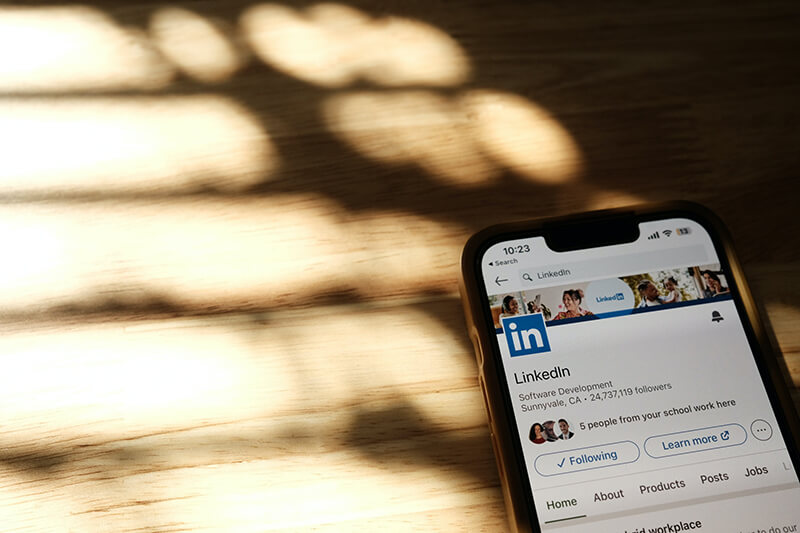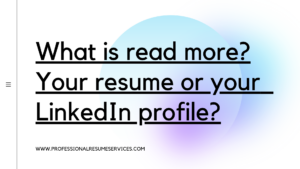One question I get often is: just how important is it to optimize my LinkedIn profile? Short answer: very! In today’s fast-paced professional landscape, LinkedIn has emerged as a critical platform for executives seeking to enhance their online presence and attract valuable opportunities. As an executive-level professional, your LinkedIn profile should serve as a powerful tool to showcase your skills, achievements, and unique value proposition to potential employers and industry leaders. In this blog post, I’ll help you explore the significance of an executive-level LinkedIn profile and provide valuable insights to help you optimize your online presence effectively.
The Power of LinkedIn for Executives
There’s no doubt that LinkedIn has transformed the way executives approach job searches and networking. With over 900 million users worldwide, including top-tier executives, this platform offers unparalleled opportunities for professional growth and visibility. As an executive, your LinkedIn profile is more than just an online resume—it’s a dynamic platform to demonstrate your professional capabilities, industry knowledge, and thought leadership.
A well-optimized LinkedIn profile allows you to position yourself as a sought-after executive, attracting the attention of influential decision-makers and potential employers. By leveraging LinkedIn strategically, you can establish yourself as an innovator in your industry, build meaningful connections, and open doors to unadvertised executive opportunities that you may otherwise miss out on.
Key Elements of an Executive-Level LinkedIn Profile
These facts are all well and good, but how do you actually make that happen? Let’s dive in. To create an executive-level LinkedIn profile that stands out among the crowd, I’d like to call out some of the key elements of your LinkedIn profile.
1. Professional Headline and Summary
Your professional headline and summary are the first things visitors see when they land on your LinkedIn profile. These sections must be compelling and tailored to highlight your executive expertise, unique strengths, and career objectives. When writing this headline, we believe in focusing on crafting attention-grabbing headlines and impactful summaries that leave a lasting impression. There are 220 available characters–use them!
2. Showcase Executive Achievements and Impact
As an executive, your track record of accomplishments is invaluable. Use your LinkedIn profile to showcase your professional achievements and focus on those that demonstrate your ability to drive measurable results. Describe how your leadership has positively impacted organizations, teams, and bottom-line outcomes. Be sure to think about what potential employers are looking for and what sets you apart from the rest.
3. Optimizing Experience and Skills Sections
The experience and skills sections of your LinkedIn profile are critical components as well. Structure your experience section to effectively present your executive roles, responsibilities, and career progression. Emphasize leadership achievements and initiatives that set you apart from other candidates. It is important to optimize your LinkedIn profile to ensure that your professional journey resonates with the executive opportunities you are seeking.
Make sure you fill out all 50 skills (pinning your top 3) for optimal results.
4. Leveraging Recommendations and Endorsements
Recommendations and endorsements from colleagues, superiors, and clients add credibility to your LinkedIn profile. It’s one thing when you claim you’re good at something, it’s even more powerful when this claim is backed up by somebody else. Positive endorsements highlight your skills and expertise, reinforcing your executive brand. Consider leaving them for others. I bet they’ll reciprocate!
5. Maintaining a Consistent and Professional Brand
I say this a lot, and today is no exception: consistency is key when it comes to building a professional brand. Ensure that your LinkedIn profile aligns seamlessly with your executive resume and other professional branding efforts while still staying true to yourself. A cohesive brand message across all platforms strengthens your executive identity and enhances your credibility in the eyes of potential employers.
Building a Strong Executive Network on LinkedIn
Building a strong, optimized profile is only one part of a strong LinkedIn strategy. LinkedIn is all about networking, after all, and the importance of networking can’t be overstated. I’ve found that a robust executive network on LinkedIn can significantly impact your career trajectory. Here are two essential strategies we recommend to grow your connections and visibility:
1. Expanding Connections with Industry Leaders
Don’t be shy! Reach out to and connect with influential professionals and industry leaders to expand your network. Engage with their content, share your insights, and establish genuine relationships. We’ve all heard the old adage: “It’s not what you know; it’s who you know.” LinkedIn is an excellent tool to aid in growing that circle of people that you “know.” In today’s digital age, it doesn’t matter if you’ve never met your connections in person.
2. Joining and Engaging in Executive Groups
Participating in executive-focused LinkedIn groups allows you to engage with peers, share knowledge, and build meaningful relationships. Showcase your expertise by actively participating in discussions and providing valuable insights.
As an executive-level professional, a well-optimized LinkedIn profile is an invaluable asset in your career toolkit. It’s crucial to take advantage of LinkedIn’s vast potential to showcase your executive skills, achievements, and unique value proposition. If all this seems a bit overwhelming, that’s what we are here for! We’re dedicated to helping executives like you optimize their LinkedIn profiles and unlock exciting opportunities. Please feel free to reach out with any questions! If you haven’t already, it’s time to embrace the power of LinkedIn, elevate your executive brand, and drive your career success.









